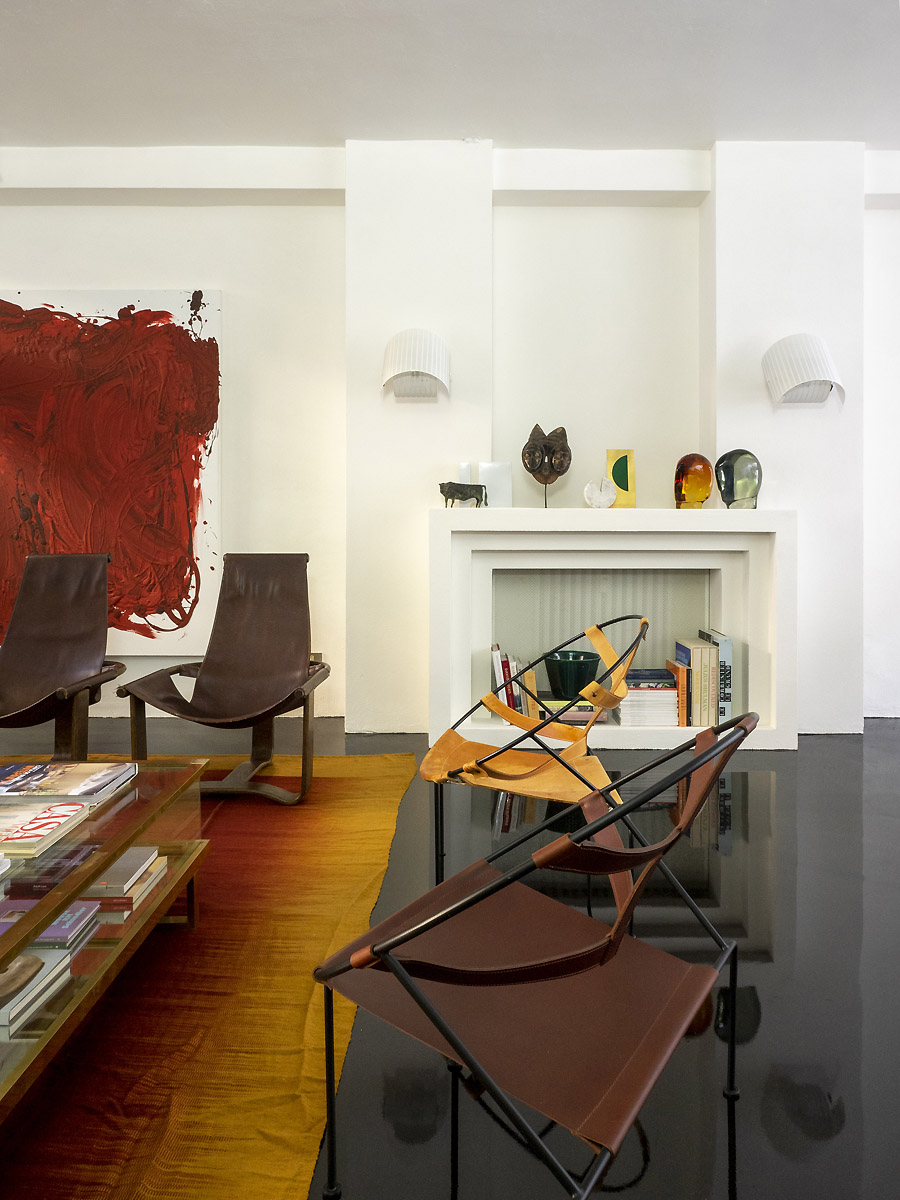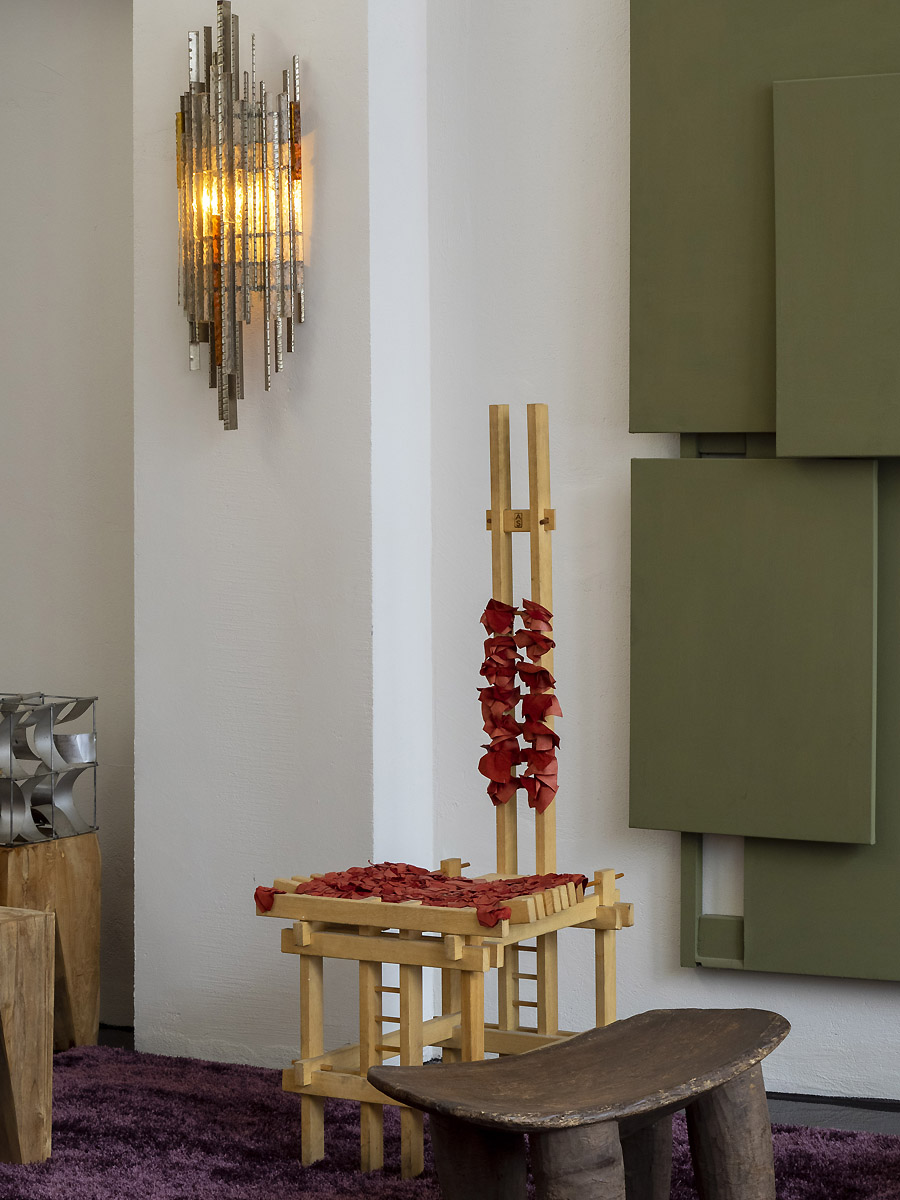
ATELIER APARTMENT

PHOTOGRAPHY: GIULIO GHIRARDI | STYLING: MARTINA LUCATELLI








Seductive, Crisp, and Elegant
Text by Marta Galli for Architectural Digest. Published October 5, 2021
The glossy resin floor, in a deep, almost cosmic shade, reflects the furniture like a water mirror. Everything in Hannes Peer’s studio is so cinematographically seductive that it’s easy to imagine soirées in tuxedos and evening gowns, as uninhibited as a Halston party. Yet this is Milan, not New York, and the architect’s atelier is perhaps one of the best-kept secrets in the Porta Romana district.
Yet, above all, this is a place of meditation and creativity—where Hannes Peer’s projects exist in the form of ideas, models, and prototypes before coming to life. In a rare occurrence, the studio was opened (by invitation) during Design Week in early September to showcase new furniture pieces created in collaboration with the Parisian brand La Chance. “We had long and intense discussions about where to exhibit these new pieces,” the architect explains, “but the idea of presenting them in my studio, where they were born, captivated me.”
It took nearly three years of searching before discovering this low industrial building in Milan—formerly a printing house, then a beauty salon, and finally a massage center fragmented into small rooms. “The potential was barely visible when I first stepped in, and my closest friends thought I was crazy for taking it,” Peer recalls. But by wiping the slate clean, the space revealed the perfect proportions for an airy, sophisticated open-plan layout spread across two levels. At the entrance, a sunken conversation area was inspired by the famous living room of Eero Saarinen’s Miller House.
Today, the crisp and elegant interior evokes an overseas atmosphere (much like his Alcova installation) and seamlessly adapts to multiple functions—part office, part home, part workshop. The décor is defined by an eclectic mix of cultural and aesthetic references, ranging from the classicism of white plaster casts to Joe D’Urso, from curated modernist pieces to sculptures by his mother, artist Ursula Huber. “I believe that experiencing what is my most private space,” the architect continues, “allows visitors to grasp the meticulous layering of archetypes, elements, and codes that informs my work.”
Here, the new marble pieces—defined by their strong visual impact and masterful use of materials—integrate seamlessly into a fully realized universe. On the aubergine-colored rug, next to the banquette in the conversation area, sit the Marmini pieces: a tabouret in Fior di Pesco marble and a chaise longue in Verde Api, Carrara white, and Fior di Pesco, which could just as easily furnish a garden as functional sculptures. In the raised dining area, the grand Lamina Table in Portuguese Estremoz marble—topped by a striking metallic chandelier—reveals a fascinating transparency (and is fully disassemblable!). “Without a doubt,” Peer remarks, standing before the monumental table, “this is the pièce de résistance.”